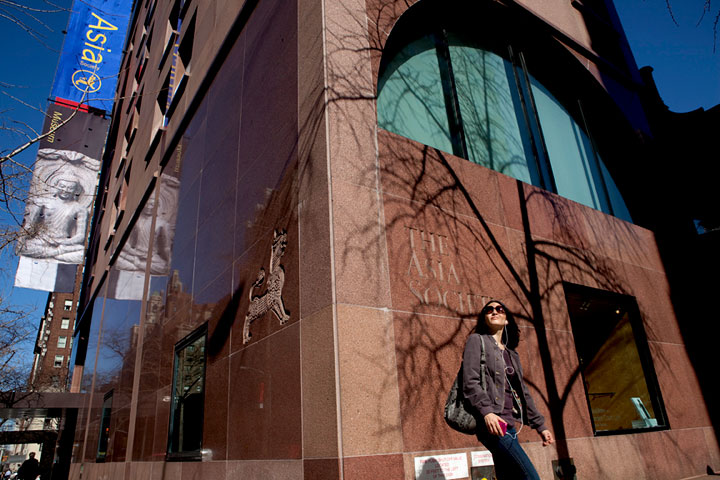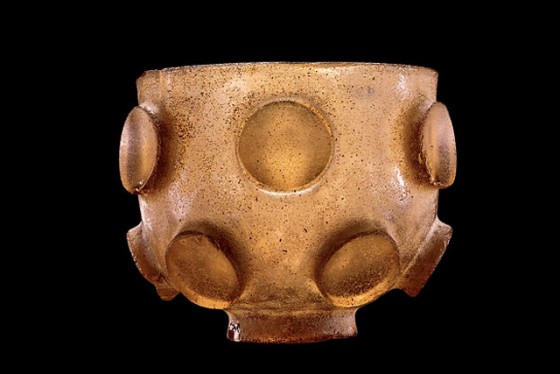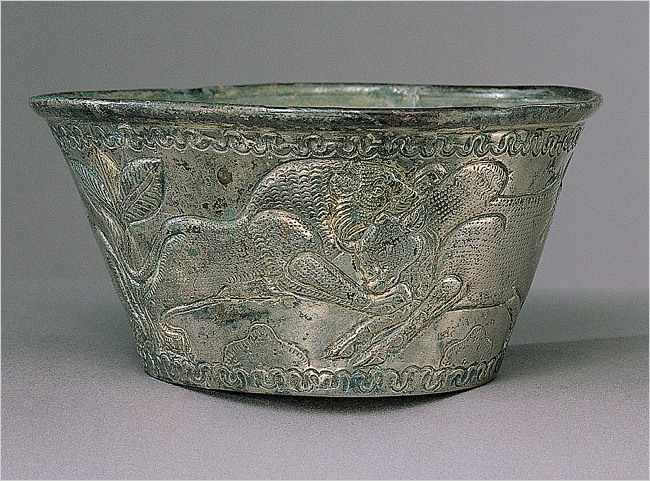Glass, Gilding & Ancient Design: The Art of Sasanian Iran (224-642)
his exhibition presented masterpieces illustrating the splendour of the court arts of the Sasanian dynasty, which ruled the ancient Near East from the third through seventh centuries. The extraordinary luxury of the court was represented by gilded silver plates with royal imagery, vessels decorated with dancers and musicians, precious glass wares, silk and fine wool textiles, luxurious arms, carved gems, and seals. Bronze plates, stucco panels, and mosaics will provided broader insight into the arts of this once flourishing empire. In a climate where there is a great need to understand the unique contributions of Iranian culture to world civilizations, Glass, Gilding, and Grand Design presented an important critical study that demonstrated both the splendour of ancient Iran and the major achievements of the Sasanian empire in the realms of government, administration, and the arts.
The kings of the Sasanian dynasty dominated Mesopotamia and Iran for more than four centuries, ruling over a realm comparable to that of the emperors of Rome and Byzantium. While the Sasanian empire coexisted alongside the Byzantine empire and was of equal importance and grandeur, it is not as widely studied or recognised. While the Sasanians inherited a land divided into small kingdoms and at war with each other, they passed on to their successors the concept of a unified empire and a tradition of legendary royal power and unparalleled achievement in the arts.
The most conspicuous monuments of the Sasanian empire are the huge dynastic rock reliefs carved on the mountain cliffs of Iran with investiture, battle, and hunting scenes. More familiar are silver-gilt treasures, a number of which will be included in the exhibition, and the collections of seals illustrating a great range of designs. Many characteristics of Sasanian art are consistent with the thought and beliefs of the Zoroastrian religion. Greco-Roman imagery on selected works also demonstrates the western influence on Sasanian art.
The reach of Sasanian culture extended far beyond the empire’s territorial borders, as far as western Europe, Africa, China, and India. The relationship between the Sasanian and Romano-Byzantine cultures is not widely realised, yet the interaction between them had a significant influence on the character of early Islamic and medieval European life. This is apparent in many areas, including the concept of majesty, the structure and procedures of court life, and the development of the arts, including architecture and writing. The penetration of the Sasanians eastward into Central Asia and their control for a time of parts of the great Silk Road led ultimately to the influence of Iranian forms and designs on the art of East Asia.
A historical exhibition such as Glass, Gilding, and Grand Design: Art of Sasanian Iran (224-642) can play a critical role in current events. By bringing a Sasanian exhibition to the New York/American audience for the first time in over a generation, this programme provided a special opportunity to educate the American public about Iran and how its culture and history played and indeed, continues to play an important part in understanding the country’s current position, motivations, and ambitions when it comes to conflicts over nuclear power and international relations.
Among other collections, the works on display were drawn from the Musée du Louvre, the Bibliothèque nationale de France, the Cincinnati Art Museum, the Metropolitan Museum of Art, and the Sackler Gallery in Washington, D.C. The exhibition was organised by the City of Paris, Musée Cernuschi, and Paris Musées in association with Asia Society, New York. It was curated by Françoise Demange, Conservateur en chef au Département des antiquités orientales, Musée du Louvre. For the presentation of this exhibition at Asia Society, Michael Chagnon, Research Assistant of Islamic Art at the Brooklyn Museum of Art, served as curatorial consultant, and Dr. Prudence Harper, Curator Emeriti of Ancient Near Eastern Art at the Metropolitan Museum of Art, served as curatorial advisor.





